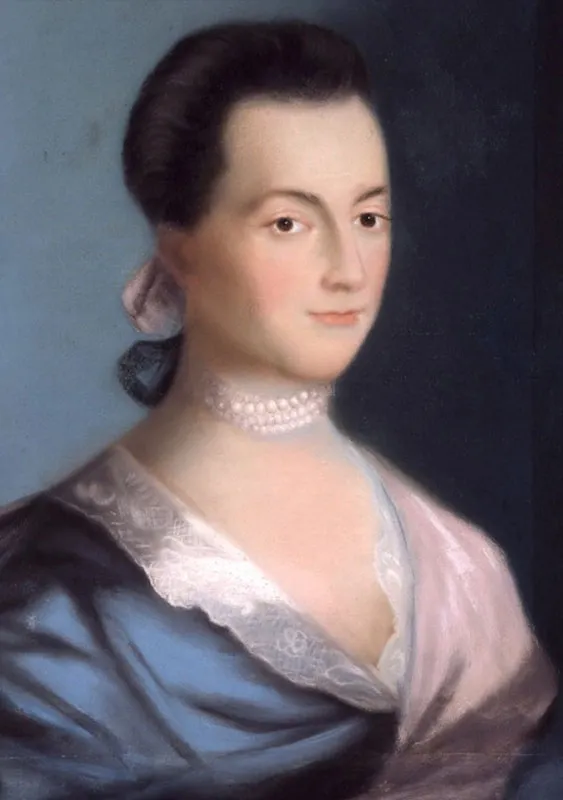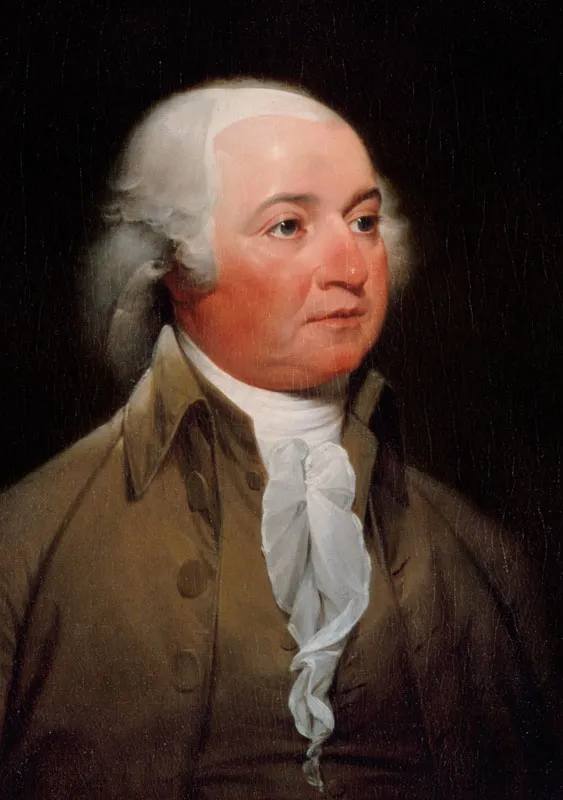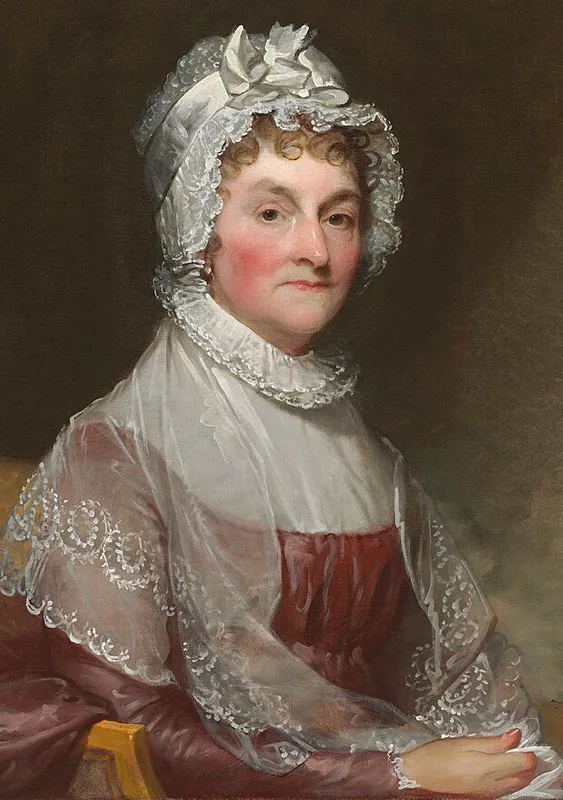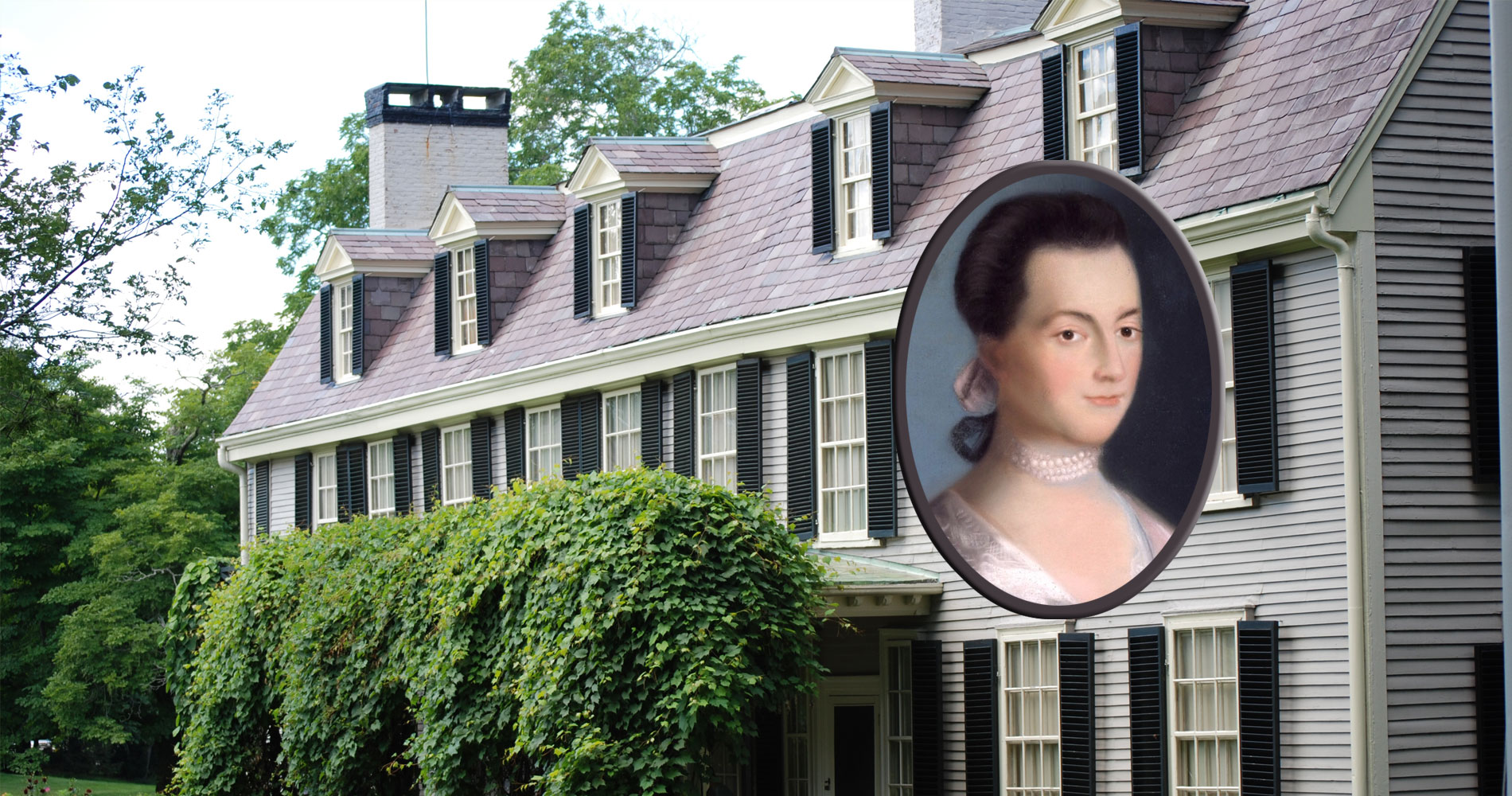Abigail Adams (1744-1818) was the First Lady of the US to John Adams, the second President and also the mother of the sixth President, John Quincy Adam. A pioneer in women’s rights and advocate of abolition. Her prolific letters to her husband document her visionary beliefs and courage that laid the foundations for democracy in America.
Alexandra Winterstein
17 July 2024
French version | German version
In the history of the US, there were only two women who are remembered as First Ladies who were also mothers of US Presidents: Barbara Bush and Abigail Adams. The Adams Family of Quincy, Massachusetts gave the US not one but two Presidents, John Adams and John Quincy Adams, the second and sixth President, respectively. Most in the US know this but not so many are familiar with John Adams’ wife, Abigail Adams, and her achievements.
Abigail Adams, as history would judge in hindsight, proved to be far ahead of her time: a modern woman of courage, clarity, outspokenness, resilience and strength – someone unrestricted by the standards of the time. Through her active engagement in political affairs and her wise counsel to her husband, John Adams, she set a precedent for the level of involvement and impact a First Lady could have. In this way, Abigail Adams elevated and expanded the influence of the First Lady’s position beyond that of any previous US First Lady. Her husband, President John Adams, relied on her counsel and support. In a letter to Abigail he wrote: “I never wanted your advice and assistance more in my life…I want to hear you think or see your thoughts.”
Abigail Smith was born in 1744 in Weymouth, Massachusetts to an influential family. However, unlike men, she did not have access to formal education. Nonetheless, she did not let this hinder her; she read extensively and self-educated using books from her father’s library. When she was twenty, she married her intellectual equal John Adams, a Harvard law graduate from Braintree, Massachusetts. Throughout their solid marriage of 53 years, she proved to be an exceedingly important confidante, advising him on political matters during the time of the American Revolution. It was a tumultuous period of history that was well documented by the many letters the Adamses wrote to each other.
As a delegate to the First Continental Congress, in 1774, John traveled to Philadelphia, where the US took its initial legislative steps toward establishing a government independent from Great Britain. Two years later, when John participated in the First Continental Congress, Abigail wrote her most famous letter, imploring that that the Founding Fathers “remember the ladies, and be more generous and favorable to them than your ancestors” (when they enact new codes of law). Referring to the limited property rights and lack of educational opportunities for women at the time, she admonished him: “Do not put such unlimited power into the hands of the husbands”.
Abigail Adams had five children and spent much of her time alone, as John travelled first as a judge and later as a delegate to the Continental Congress, envoy abroad in Paris and London, and elected officer under the Constitution. Personal independence was critical for Abigail, given her intellect and the limitations on women at that time. This helped her to understand the nation’s need for independence from Great Britain. Her strong values of public duty and being of service made her aware of the importance of freedom, and the Americans’ dreams to control their own political destiny. Not everyone shared the Adamses’ vision of an independent state.
 Abigail Adams by Benjamin Blythe, 1766 © Public domain
Abigail Adams by Benjamin Blythe, 1766 © Public domain
 Official Presidential portrait of John Adams by John Trumbull, ca. 1792 © Public domain
Official Presidential portrait of John Adams by John Trumbull, ca. 1792 © Public domain
 Abigail Adams by Gilbert Stuart (National Gallery of Art)
Abigail Adams by Gilbert Stuart (National Gallery of Art)
Abigail was firm: “A people may let a king fall, yet still remain a people: but if a king lets his people slip from him, he is no longer a king. And this is most certainly our case, why not proclaim to the world in decisive terms, your own independence?” John agreed with his wife, yet Abigail’s vision of independence was broader than that of her husband’s political colleagues. She believed all people, of both race and gender, should be granted equal rights. Despite Abigail’s urgings to abolish slavery and include all people in America’s new system of government, her views were seen as way too progressive for the delegates of the Continental Congress. Unfortunately, while they did adopt the Declaration of Independence on 4 July 1776, the members of Congress failed to guarantee the rights of women or Blacks under the new government they established. However, important foundations for equality were laid.
Before she joined him in Europe in 1784, Abigail’s letters to her husband tell a story of a women who struggled for five years at home with wartime shortages and inflation, while running the farm and raising their children. But she did not succumb to self-pity. During this lonely time, she managed the affairs of the farm and the family business, often making superb investment decisions.
In 1789, one year after they returned from Europe to Braintree (close to Boston), John Adams was elected the first Vice President of the United States. During the next twelve years, John Adams served two terms as Vice President (1789-1797) and one term as President (1797-1801). However, it was a difficult time as head of state, with the US constitution so young, John experiencing dissent in his cabinet and party lines forming with the opposition from Thomas Jefferson. Abigail was also beginning to experience health issues in the form of a debilitating rheumatoid arthritis. But still she worked adamantly beside her husband, maintaining a grueling schedule to perform all her duties as First Lady with all its social obligations.
As First Lady, Abigail Adams’ fortitude was subjected to an immense trial when profound grief struck her family. Her son Charles, at the young age of thirty, tragically succumbed to the affliction of alcoholism, an agonizing personal bereavement that compounded the demands and challenges she confronted during her tenure at the White House.
After John Adams lost the Presidency to Thomas Jefferson in 1800, the couple retired to their home in Quincy, Massachusetts. Abigail died on October 28, 1818, at the age of 73 of typhoid fever.
Abigail Adams was the first First Lady to preside over the White House in Washington, DC. She is remembered as a champion of women’s right and as a prolific writer of letters which illuminated her courage, talent and contribution not only to strengthening women’s rights but also to the foundations of freedom and other democratic values that are the basis of the founding and evolution of the US.







